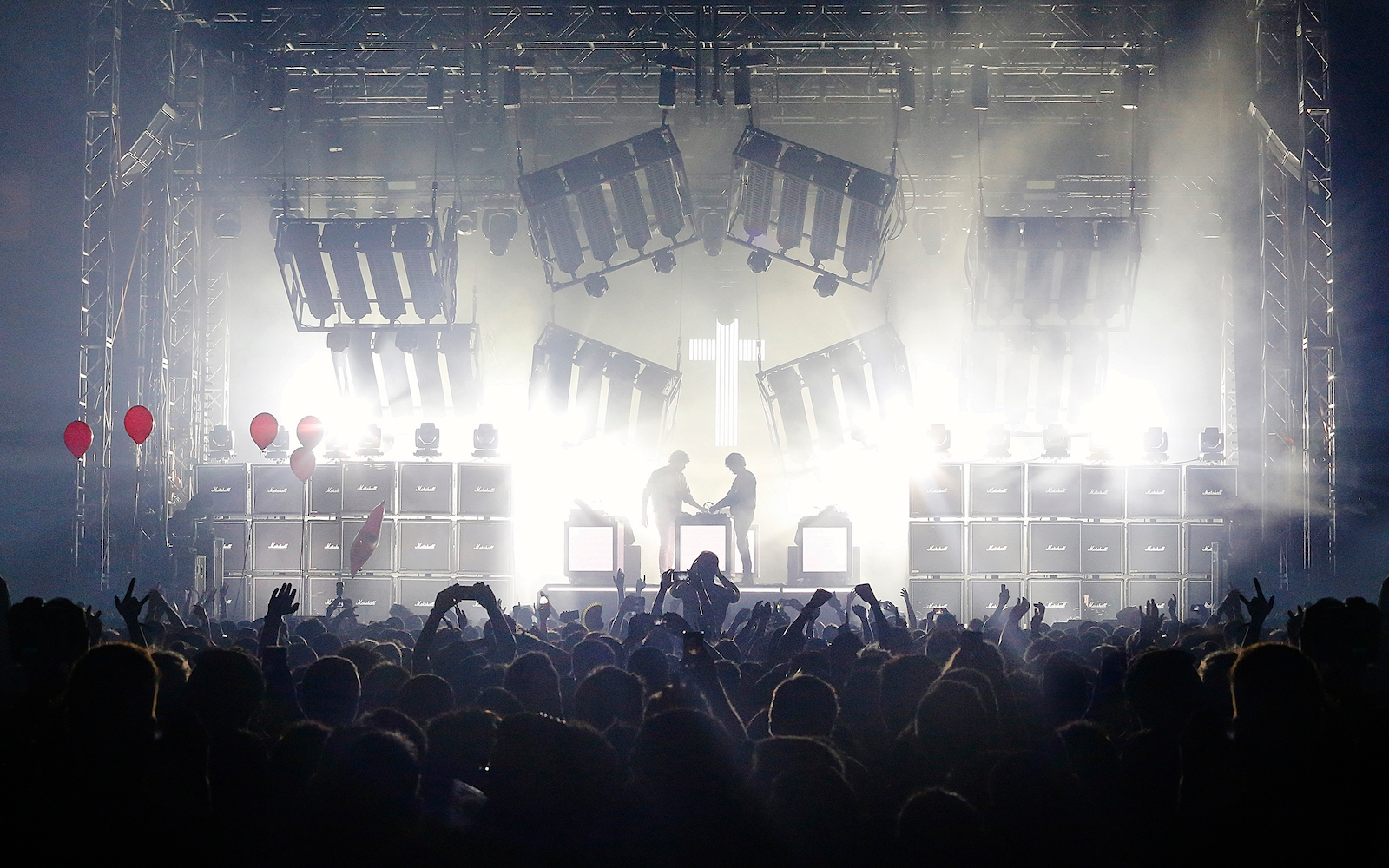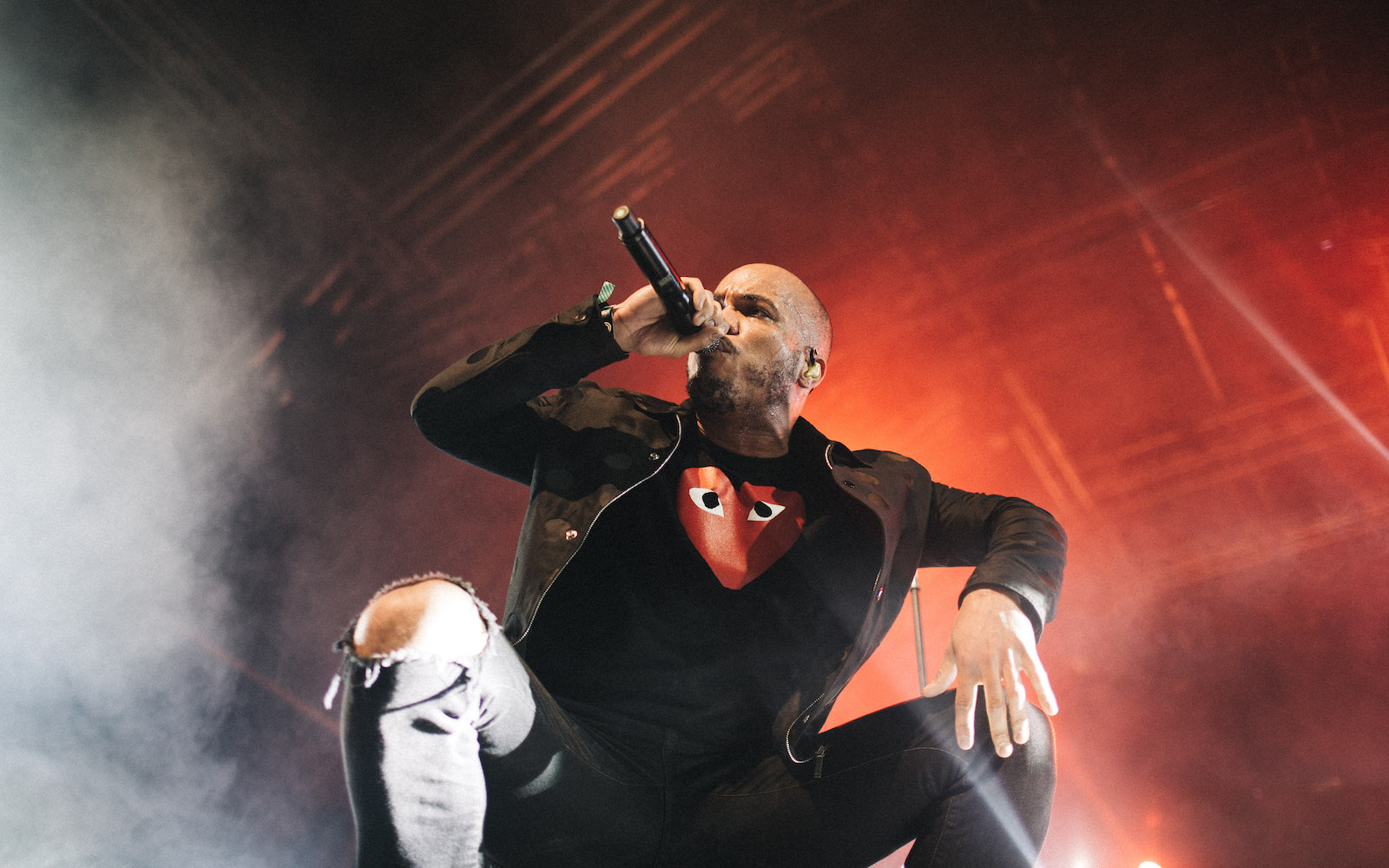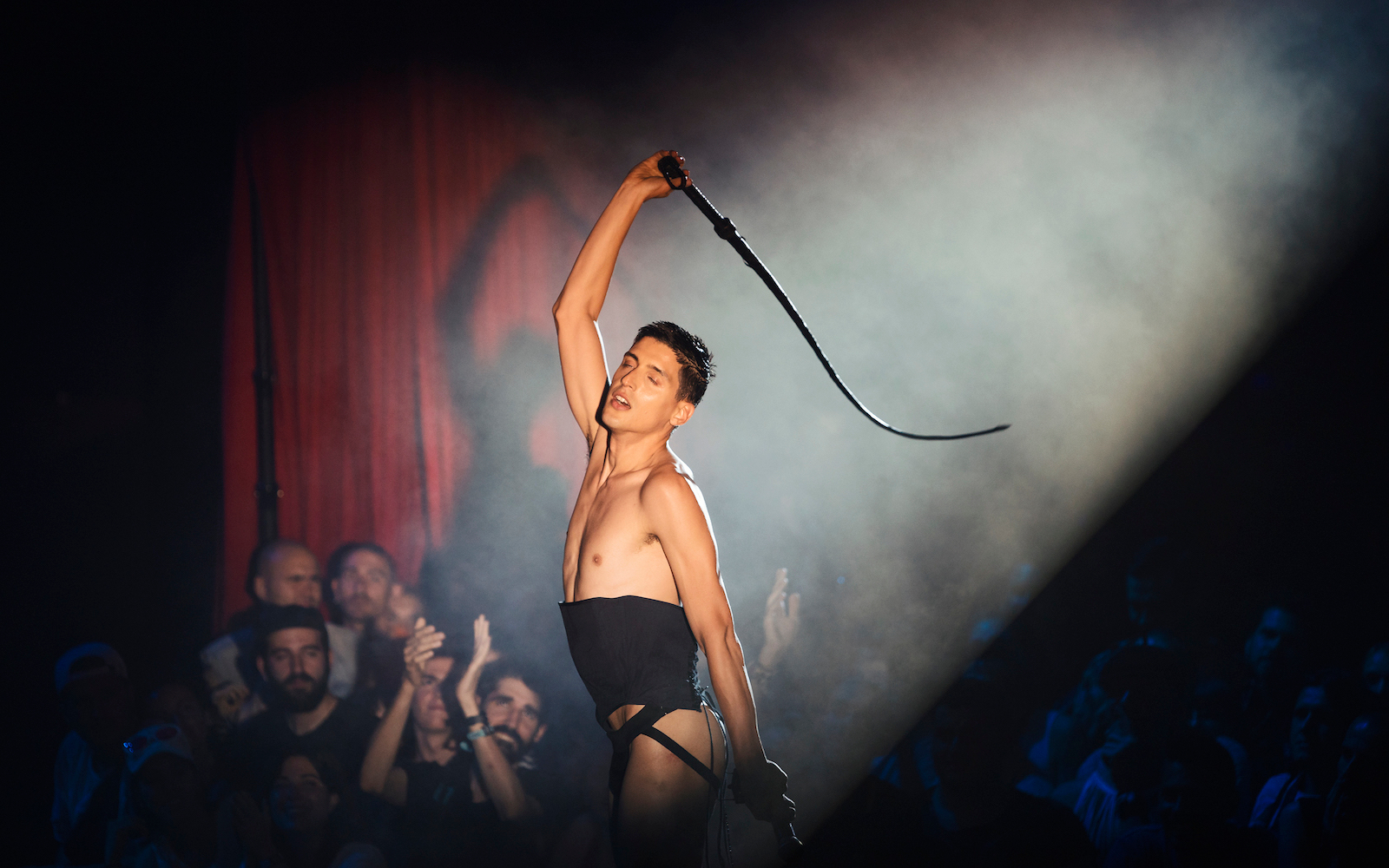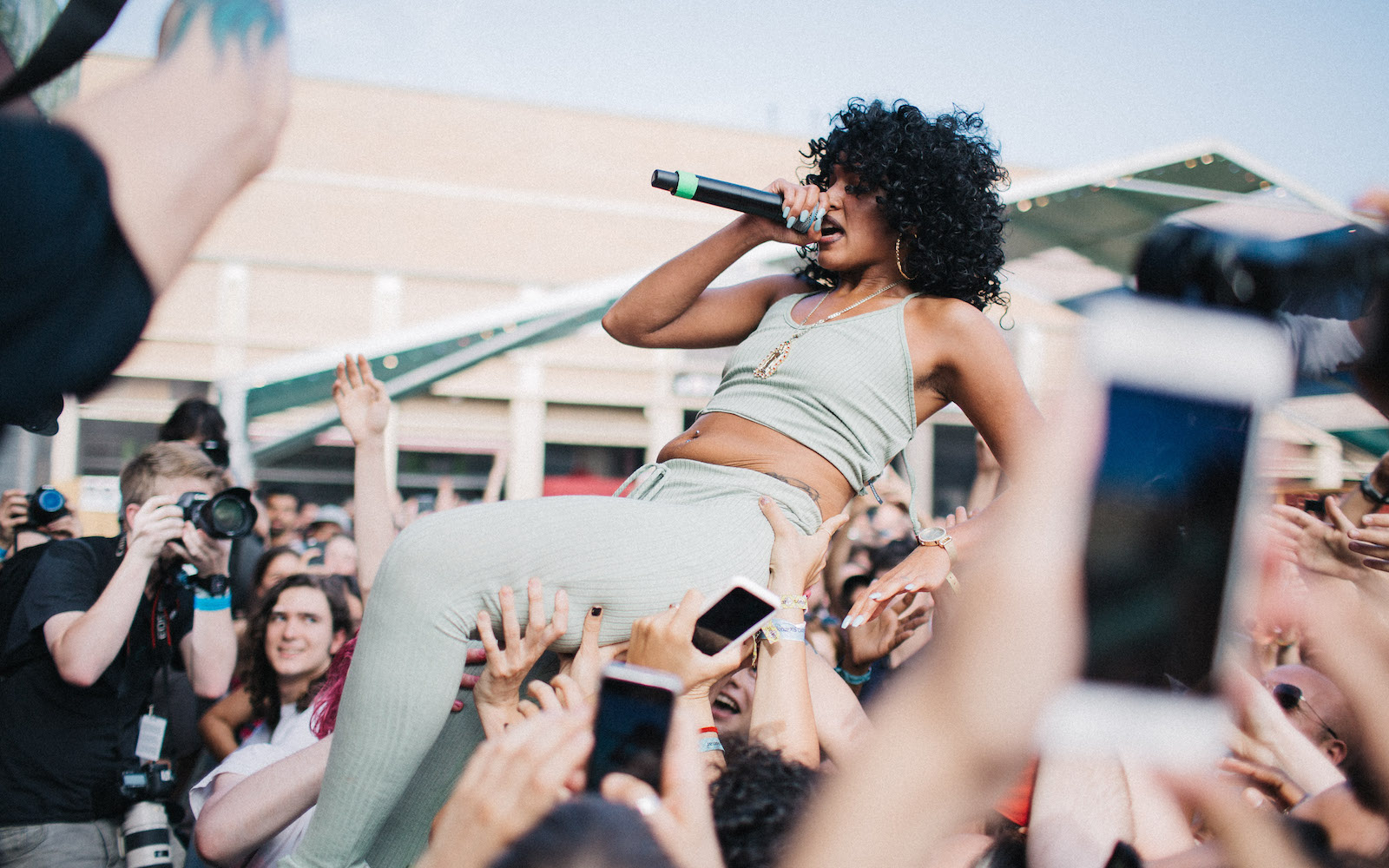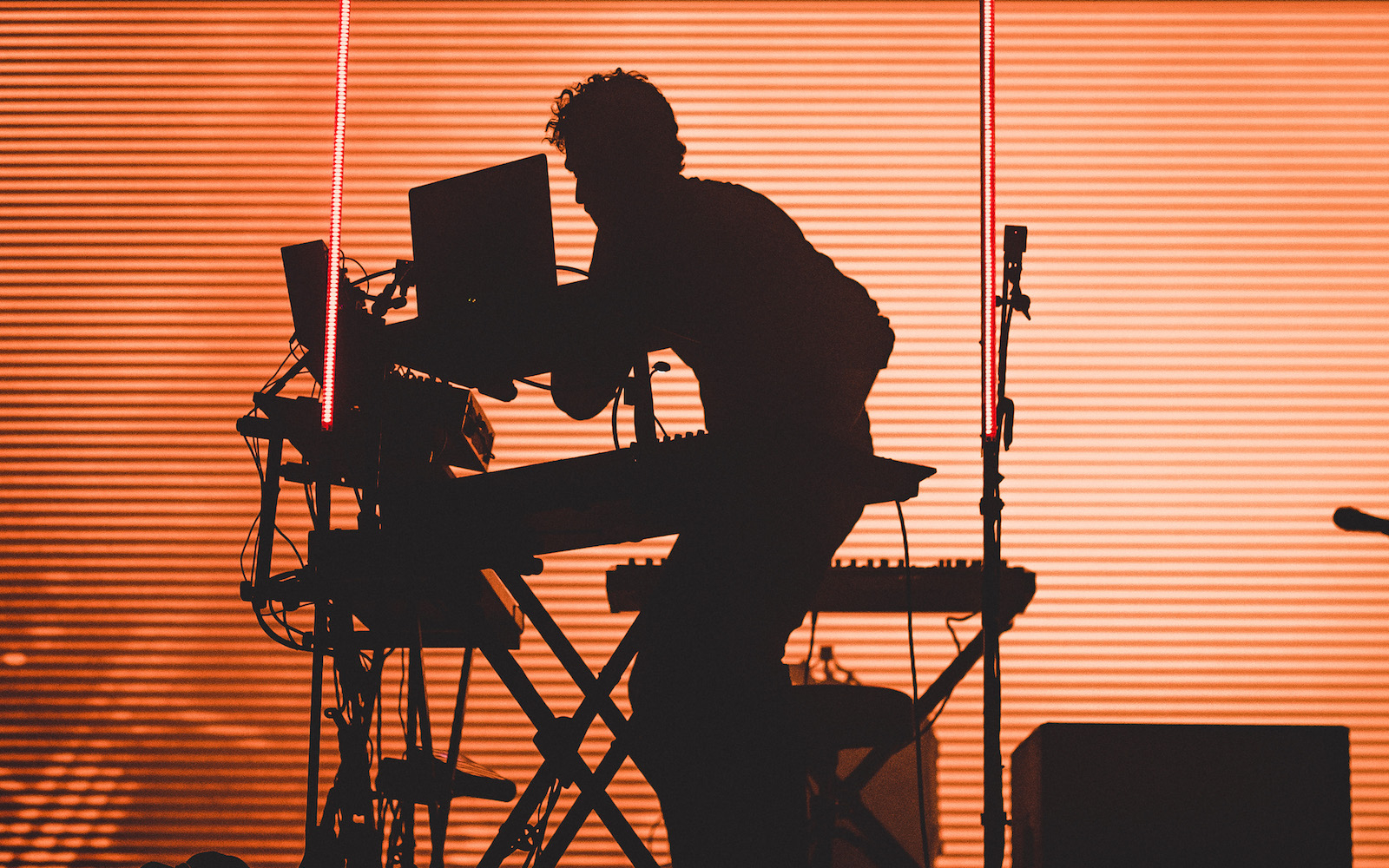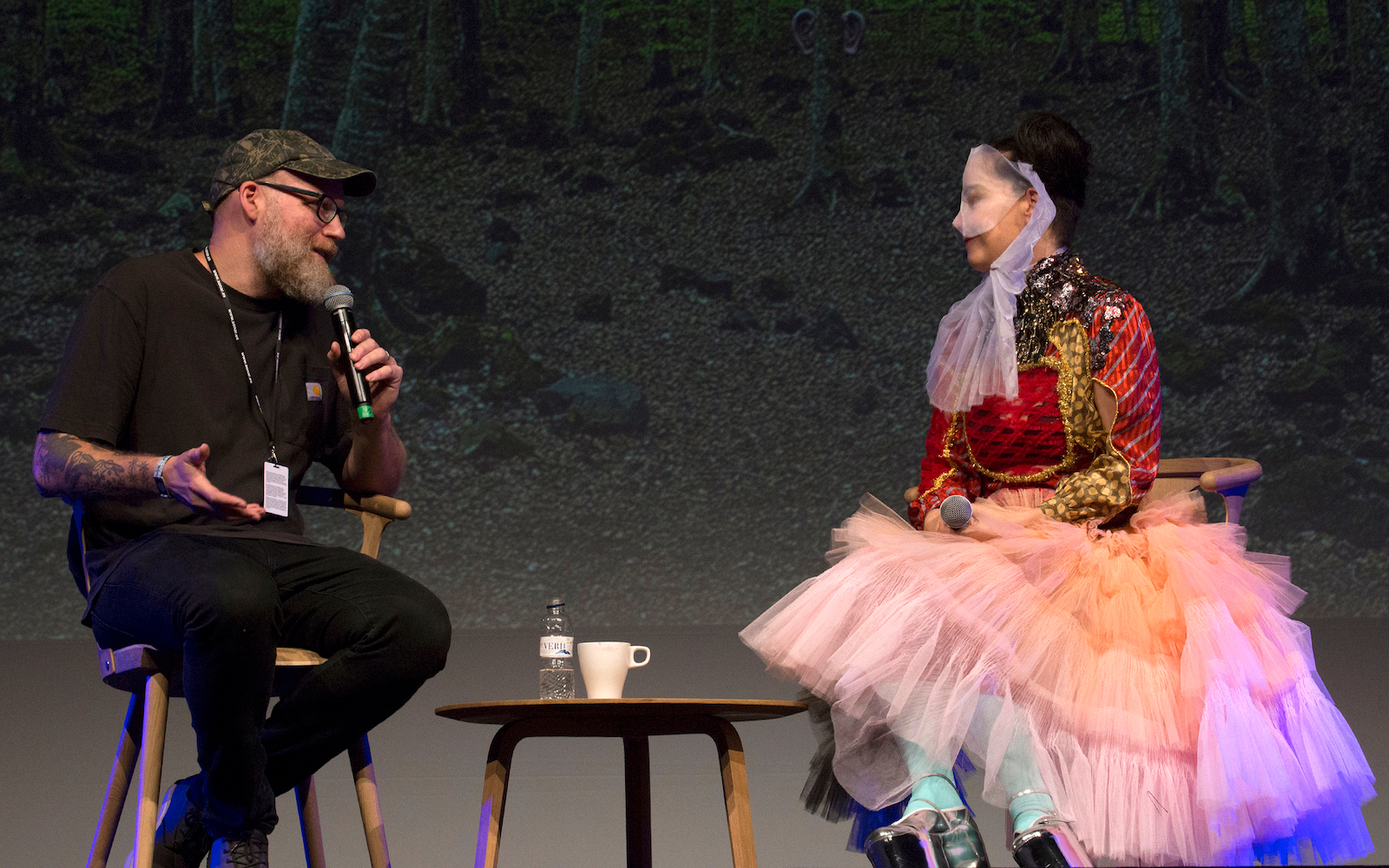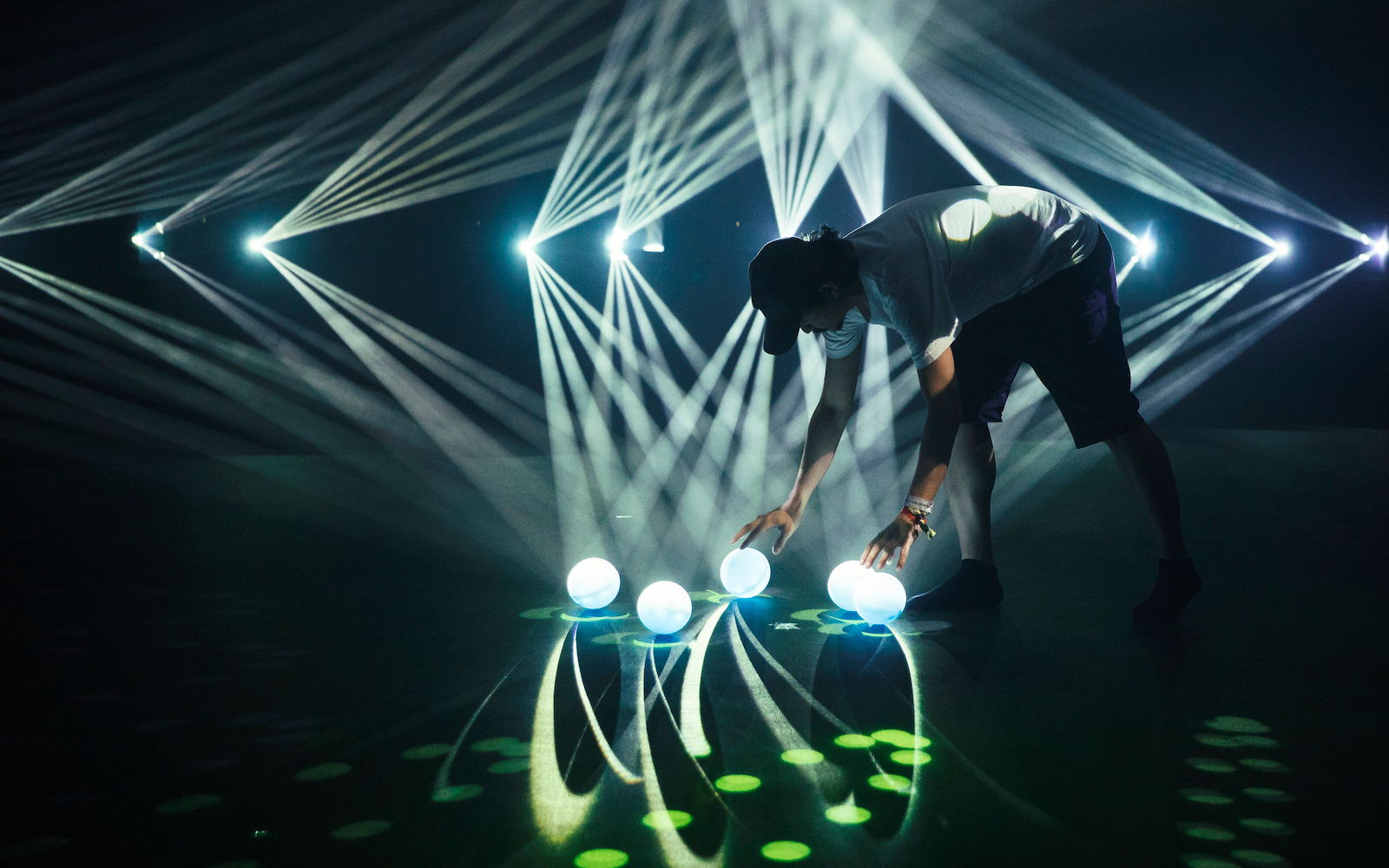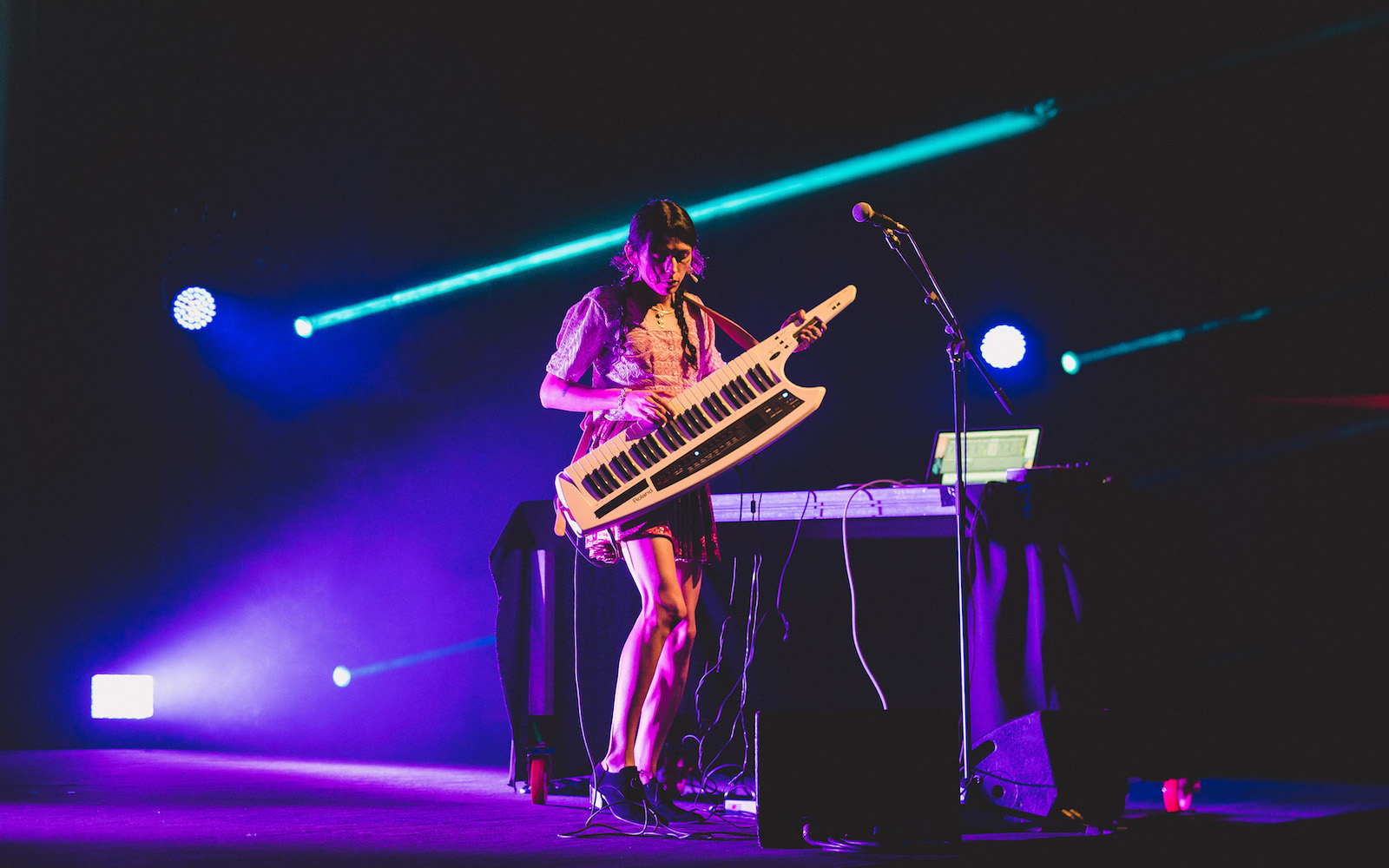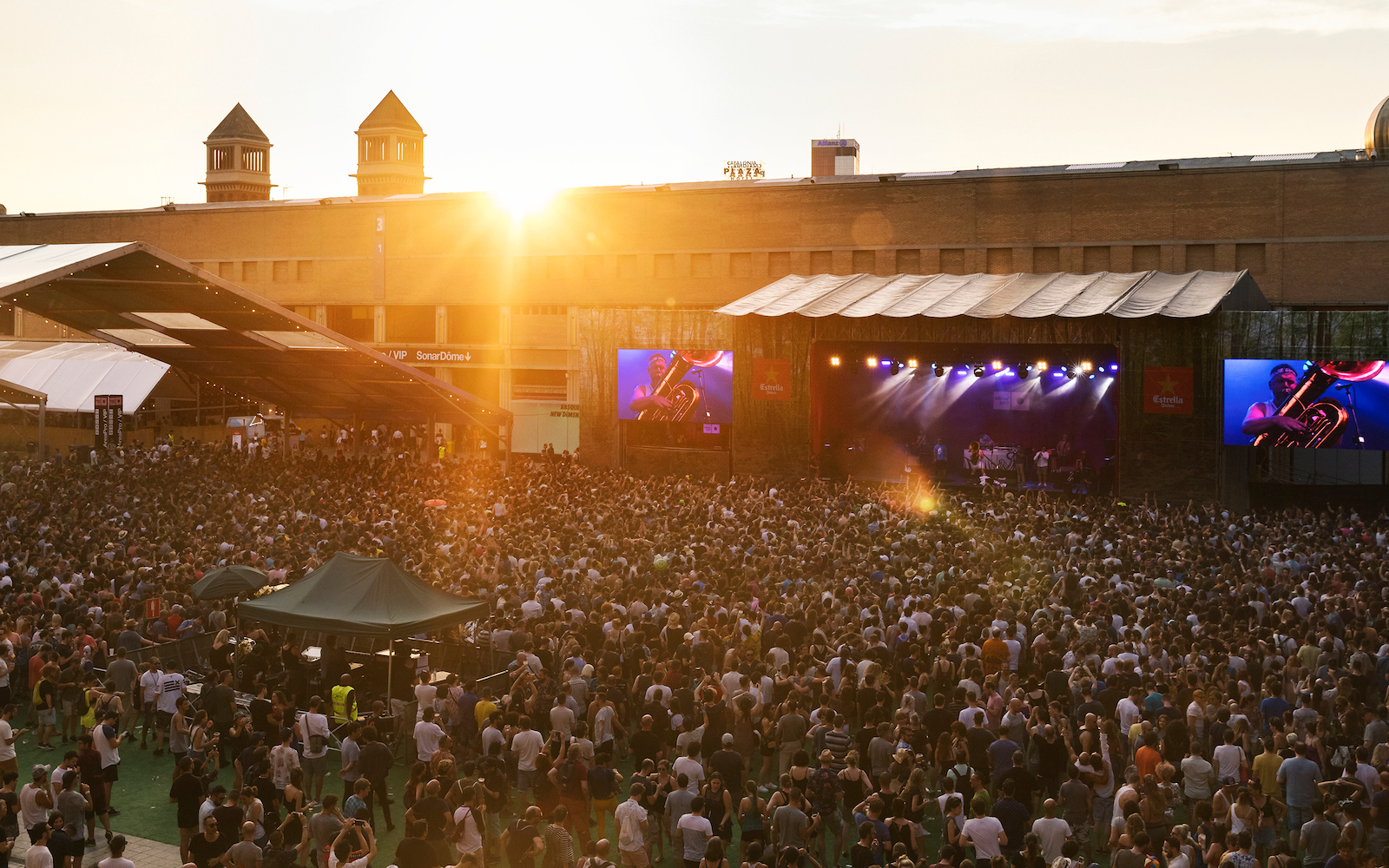Photo credit /
Lead - Nerea Coll, Arca, Sunset
Ariel Martini - RP Boo, Carl Craig, Hunee & Daphni
Santiago Felipe - Björk
Fernando Schlaepfer - Thundercat, Nicolas Jaar, Elysia Crampton
Leaf Hopper- Justice
Vicky Grout - Anderson .Paak, Princess Nokia
Sónar 2017: Five key performances
- PublishedJun 20, 2017
- Words
- Share
- Sónar's 2017 edition welcomed 123,000 visitors, which makes it among the world's largest electronic music events. But as much as scale, it's attention to detail that makes the Barcelona festival special. There's an emphasis on the arty side of dance music culture as much as the party side. At Sónar By Day, talks and technology workshops share the spotlight with sets from world-class acts. At Sónar By Night, next-level lighting and production transform a conference centre into a mind-bending maze of cavernous club spaces. There were plenty of big names headlining this year's event, including De La Soul, Eric Prydz and Justice. But what struck me was how often I found cult favourites playing to huge, warmly receptive crowds. Weird and challenging music often went down as well as conventional crowdpleasers. After 24 years, Sónar remains among the premier showcases for electronic music culture. Here are five performances from across the weekend that cemented that reputation.
Björk Sónar opened on Wednesday with a rare DJ set from Björk. The event encapsulated two things the festival does well: big-name artists and forward-thinking sounds. I was sure Björk would play great music. Her taste, after all, has been on the cutting-edge for more than 20 years. But having never seen her DJ before, I wasn't sure how her selections would gel. It turns out that the Icelander has a remarkable knack for stitching together wildly disparate styles. I doubt I’ve seen a more diverse DJ set with such a great flow. The performance began with peaceful folk and classical songs while the audience sat on the floor. It finished rowdily with harsh post-club sounds and, for the final track, big band music from the 1940s. In between, Indian cover versions, Middle-Eastern party tracks and UK Afrobeat were among the many curveballs. One notable section saw her move from Brandy's R&B to tribal water drumming to face-melting dubstep. It struck me midway through that she must sift through an improbably huge amount of music to find such varied tunes. Björk also looked amazing. Wearing a bizarre beekeeper's outfit from the 19th century, she performed behind a botanical garden of greenery. With her wide-brimmed hat barely visible among the leaves, she looked like an enchanted character from a Studio Ghibli film. According to Björk, the staging, outfit and music were part of a theme: nature vs. digital nurture. She even revealed before the performance that she DJs with the free Mac software GarageBand. That shows you there's no formula for DJ greatness. Put simply, Björk is as good a selector as you're likely to hear.
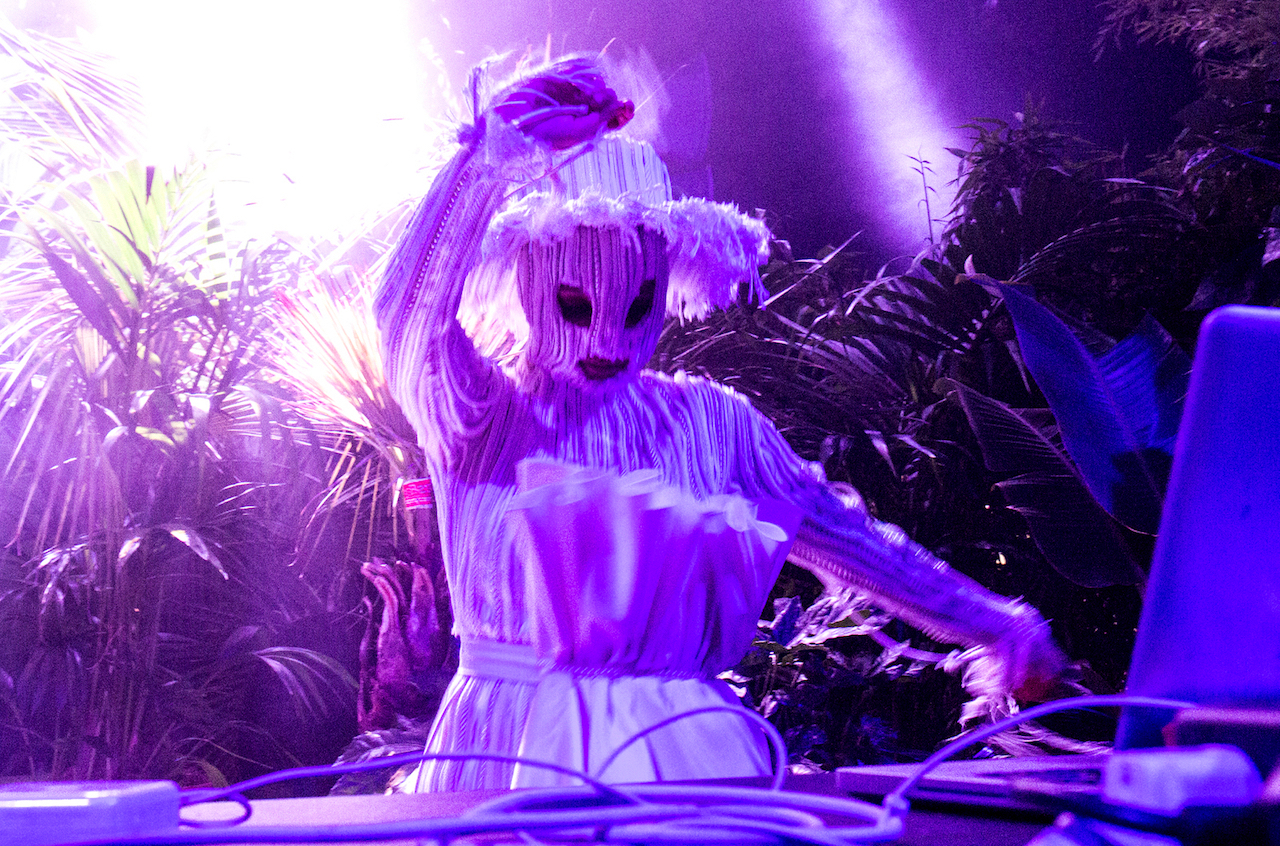 Thundercat Thundercat's work with Kendrick Lamar, Kamasi Washington and Flying Lotus has unexpectedly thrust jazz back into popular culture. That alone makes him an act worth seeing. The fact he's also a supremely gifted musician sweetens the deal. That said, his performance at SonarDôme started shakily, as sound problems delayed his set by ten minutes. This left the packed room waiting restlessly in the sticky air. When the band finally began, they launched into full-throttle jazz-fusion, complete with fretboard-shredding bass solos. Such musical flamboyance is an acquired taste, and for some, it was probably too much. But those who remained were rewarded. Playing music from Thundercat's recent album, Drunk, the band transformed pop songs into transcendental jazz freakouts. For "Them Changes," he began with sweet vocals, before leaning into drum & bass-speed improvisation. As the music intensified, Thundercat leaned back, looking like he was in physical pain, before the band snapped back with the song's familiar guitar riff. This formula was repeated throughout and gave structure to the heroic riffing. Towards the end, Thundercat announced it was Kendrick Lamar's birthday and urged the crowd to congratulate the US rapper. He then played Lamar's "These Walls," a record Thundercat featured on. It was the high point of a unique performance.
Thundercat Thundercat's work with Kendrick Lamar, Kamasi Washington and Flying Lotus has unexpectedly thrust jazz back into popular culture. That alone makes him an act worth seeing. The fact he's also a supremely gifted musician sweetens the deal. That said, his performance at SonarDôme started shakily, as sound problems delayed his set by ten minutes. This left the packed room waiting restlessly in the sticky air. When the band finally began, they launched into full-throttle jazz-fusion, complete with fretboard-shredding bass solos. Such musical flamboyance is an acquired taste, and for some, it was probably too much. But those who remained were rewarded. Playing music from Thundercat's recent album, Drunk, the band transformed pop songs into transcendental jazz freakouts. For "Them Changes," he began with sweet vocals, before leaning into drum & bass-speed improvisation. As the music intensified, Thundercat leaned back, looking like he was in physical pain, before the band snapped back with the song's familiar guitar riff. This formula was repeated throughout and gave structure to the heroic riffing. Towards the end, Thundercat announced it was Kendrick Lamar's birthday and urged the crowd to congratulate the US rapper. He then played Lamar's "These Walls," a record Thundercat featured on. It was the high point of a unique performance.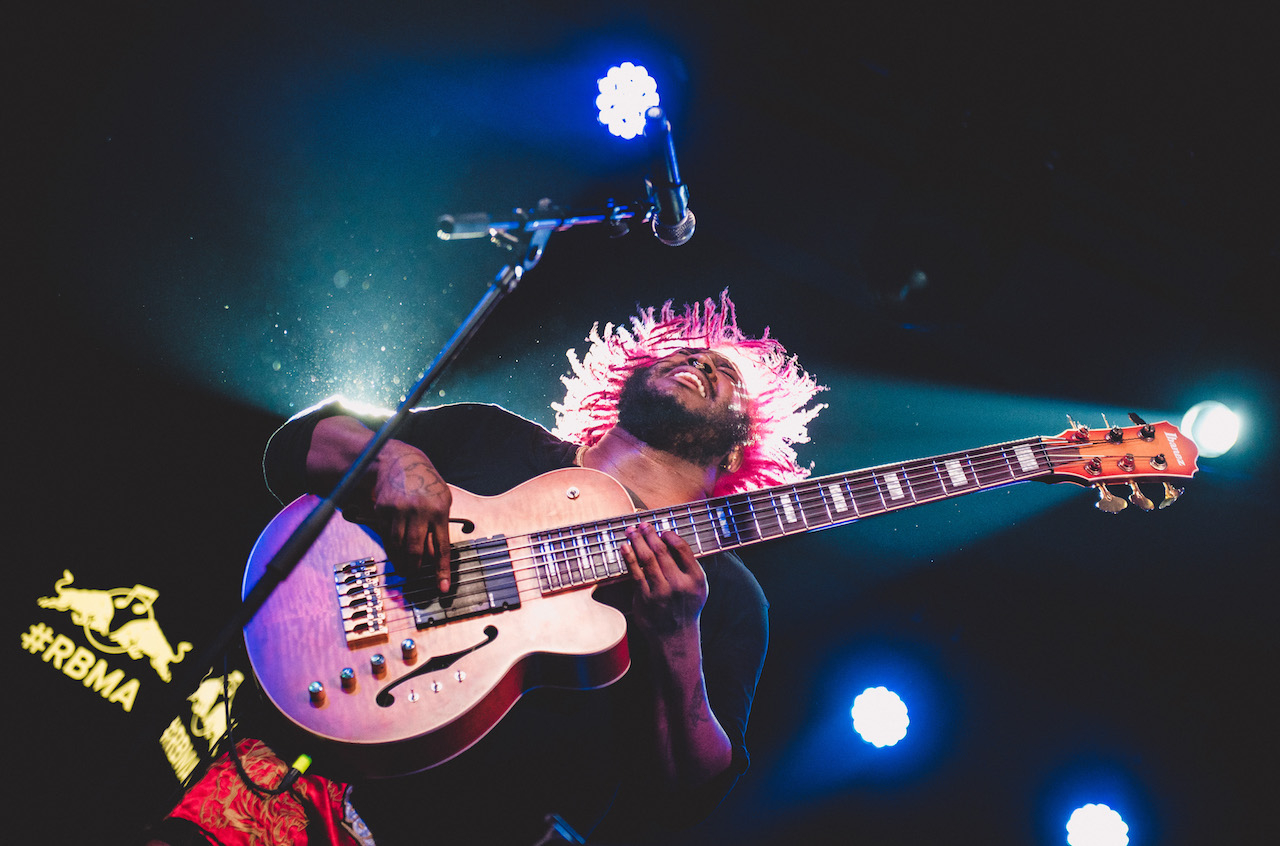 RP Boo At Sónar By Day you can easily stumble across previously unimagined sounds. One example was BCN Posse, who played the small SonarXS stage on Thursday. The group played a uniquely Iberian take on footwork, displaying the global influence of a once hyper-local Chicago sound. RP Boo, who more or less invented footwork, played soon after in SonarDôme. His performance was wildly charismatic and his huge grin was infectious. Wearing shades, he acted like his own hype man, blowing a whistle as records dropped, taking photos of the crowd and, on more than one occasion, running around the decks to pull on-point dance moves. Despite these shenanigans, he maintained high energy levels in the tunes, mixing quickly and executing spinbacks on the CDJs. What makes his music work on a big stage is malleability. You can put almost any sample over footwork and it might work. His music was intense, yet it was still crowd-pleasing. I clocked samples by Rick James, Lisa Lisa & Cult Jam, Stevie Wonder, Roy Ayers and, improbably, Lipps Inc. Some of the best tracks turned out to be his own unreleased bits, as revealed in an emotionally-charged talk the next day. For the final minutes of the performance, I moved to the front of the dance floor, where I noticed die-hard fans in Teklife t-shirts and people attempting serious-footwork moves—admittedly, with varying degrees of success. As Boo came from behind the decks to salute the crowd, it was clear the movement he helped create remains a remarkable one.
RP Boo At Sónar By Day you can easily stumble across previously unimagined sounds. One example was BCN Posse, who played the small SonarXS stage on Thursday. The group played a uniquely Iberian take on footwork, displaying the global influence of a once hyper-local Chicago sound. RP Boo, who more or less invented footwork, played soon after in SonarDôme. His performance was wildly charismatic and his huge grin was infectious. Wearing shades, he acted like his own hype man, blowing a whistle as records dropped, taking photos of the crowd and, on more than one occasion, running around the decks to pull on-point dance moves. Despite these shenanigans, he maintained high energy levels in the tunes, mixing quickly and executing spinbacks on the CDJs. What makes his music work on a big stage is malleability. You can put almost any sample over footwork and it might work. His music was intense, yet it was still crowd-pleasing. I clocked samples by Rick James, Lisa Lisa & Cult Jam, Stevie Wonder, Roy Ayers and, improbably, Lipps Inc. Some of the best tracks turned out to be his own unreleased bits, as revealed in an emotionally-charged talk the next day. For the final minutes of the performance, I moved to the front of the dance floor, where I noticed die-hard fans in Teklife t-shirts and people attempting serious-footwork moves—admittedly, with varying degrees of success. As Boo came from behind the decks to salute the crowd, it was clear the movement he helped create remains a remarkable one.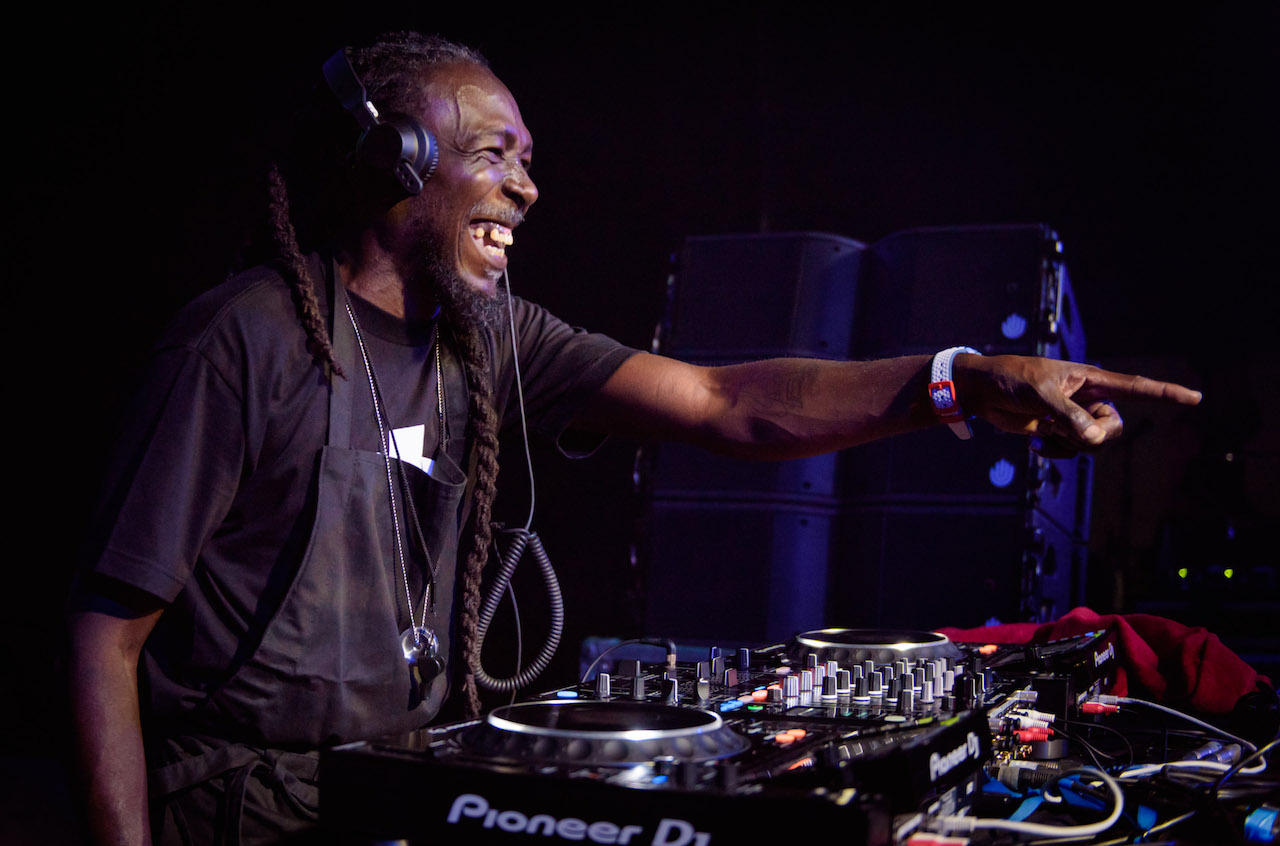 Carl Craig presents Versus Synthesizer Ensemble Recently, electronic and classical music seem to be moving closer together. Collaborations have ranged from the sublime (Jeff Mills at The Barbican) to the ridiculous (a symphonic rendition of UK garage anthems). Carl Craig has been blending these worlds in a considered way for for some time. His latest ambitious project, Versus, which sees his club productions performed by a live ensemble, took the best part of a decade to manifest. Looking at the amount of gear onstage at SonarLab, it was easy to see why. Craig cut an imposting figure, peering over a CDJ surrounded by stacks of synths. In front of him were four synthesiser players and his regular collaborator, Francesco Tristano, on piano. The set, which formed part of RA's Saturday night showcase at SónarLab, opened with "Darkness," an ominous composition that boomed like the soundtrack from an apocalypse movie. The record was a statement of intent, injecting new musical textures into Craig's music. It didn't sit comfortably in either the classical or the techno world and was all the better for it. From then on, Craig began to add more rhythms to the tracks. There was a subtle, kick drum pulse accompanying "At Les," and by the end snare rolls and snapping 909s had been introduced. This teasing of drums is a classic Craig trick, something he mastered in the '90s with production aliases such as 69. Here it was used to great effect. By the final track, Francesco Tristano's T-shirt was drenched—not a typical look for a classically-trained pianist. The performance closed with "The Melody," a lively piano house track that went down well. Craig's ambition had been successfully realised. See the full video of the performance here.
Carl Craig presents Versus Synthesizer Ensemble Recently, electronic and classical music seem to be moving closer together. Collaborations have ranged from the sublime (Jeff Mills at The Barbican) to the ridiculous (a symphonic rendition of UK garage anthems). Carl Craig has been blending these worlds in a considered way for for some time. His latest ambitious project, Versus, which sees his club productions performed by a live ensemble, took the best part of a decade to manifest. Looking at the amount of gear onstage at SonarLab, it was easy to see why. Craig cut an imposting figure, peering over a CDJ surrounded by stacks of synths. In front of him were four synthesiser players and his regular collaborator, Francesco Tristano, on piano. The set, which formed part of RA's Saturday night showcase at SónarLab, opened with "Darkness," an ominous composition that boomed like the soundtrack from an apocalypse movie. The record was a statement of intent, injecting new musical textures into Craig's music. It didn't sit comfortably in either the classical or the techno world and was all the better for it. From then on, Craig began to add more rhythms to the tracks. There was a subtle, kick drum pulse accompanying "At Les," and by the end snare rolls and snapping 909s had been introduced. This teasing of drums is a classic Craig trick, something he mastered in the '90s with production aliases such as 69. Here it was used to great effect. By the final track, Francesco Tristano's T-shirt was drenched—not a typical look for a classically-trained pianist. The performance closed with "The Melody," a lively piano house track that went down well. Craig's ambition had been successfully realised. See the full video of the performance here.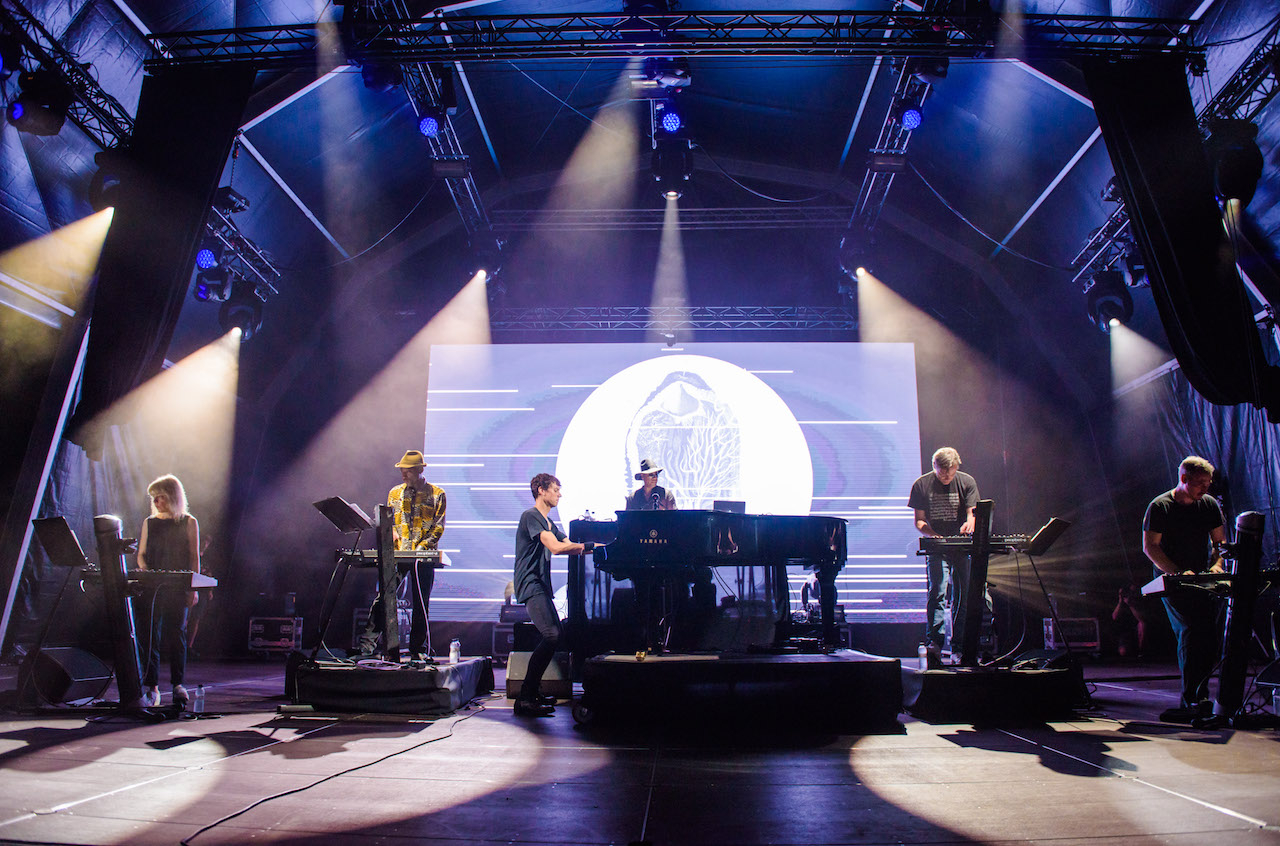 Hunee back-to-back Daphni Hunee and Daphni operate in similar spheres and share many mutual friends, so I was surprised to learn that their set at Sónar was the first time they'd played together. I wasn't surprised, however, that they delivered my set of the weekend. Playing just before sunrise at RA's showcase of SonarLab, they closed the festival in spectacular fashion. Following the techno of Marcel Dettmann and Dr. Rubinstein, their set revolved around the changing natural light. For the first hour, they played a steady stream of quality dance music. But as the sun began to rise, around 6 AM, the really colourful selections appeared. A turning point was Byron Stingily's ecstatic house anthem "Get Up Everybody." As the pianos hit, the first rays of sunlight reached the packed dance floor. Immediately the collective mood went stratospheric. In fact, I'm honestly getting emotional just reliving the memory. From then on, Daphni and Hunee brought it home with style. The records they played were adventurous, like Michael Wycoff's "Come To My World." It's a fantastic, jazzy disco record, but it hardly screams "main-stage closer." They managed to find hidden power in esoteric records. The tracks they played were full of emotion and positivity, such as Gloria Ann Taylor’s cult classic "Love Is A Hurting Thing." Another highlight came when Daphni teased a vocal sample on the CDJ, slowing it down and speeding it back up again to a huge reaction. He then dropped one of the tunes of the weekend, an unidentifiable house track that repeated ad infinitum, "Answer to the question." (I'm willing to bet it's a Daphni edit as it shared many qualities with his own "Yes, I Know.") Hunee played the final track, Aquarian Dream's "Fantasy." I looked around and saw smiles everywhere. Couples were embracing in the dawn sunlight. It's a moment that will stay with me for a very long time.
Hunee back-to-back Daphni Hunee and Daphni operate in similar spheres and share many mutual friends, so I was surprised to learn that their set at Sónar was the first time they'd played together. I wasn't surprised, however, that they delivered my set of the weekend. Playing just before sunrise at RA's showcase of SonarLab, they closed the festival in spectacular fashion. Following the techno of Marcel Dettmann and Dr. Rubinstein, their set revolved around the changing natural light. For the first hour, they played a steady stream of quality dance music. But as the sun began to rise, around 6 AM, the really colourful selections appeared. A turning point was Byron Stingily's ecstatic house anthem "Get Up Everybody." As the pianos hit, the first rays of sunlight reached the packed dance floor. Immediately the collective mood went stratospheric. In fact, I'm honestly getting emotional just reliving the memory. From then on, Daphni and Hunee brought it home with style. The records they played were adventurous, like Michael Wycoff's "Come To My World." It's a fantastic, jazzy disco record, but it hardly screams "main-stage closer." They managed to find hidden power in esoteric records. The tracks they played were full of emotion and positivity, such as Gloria Ann Taylor’s cult classic "Love Is A Hurting Thing." Another highlight came when Daphni teased a vocal sample on the CDJ, slowing it down and speeding it back up again to a huge reaction. He then dropped one of the tunes of the weekend, an unidentifiable house track that repeated ad infinitum, "Answer to the question." (I'm willing to bet it's a Daphni edit as it shared many qualities with his own "Yes, I Know.") Hunee played the final track, Aquarian Dream's "Fantasy." I looked around and saw smiles everywhere. Couples were embracing in the dawn sunlight. It's a moment that will stay with me for a very long time.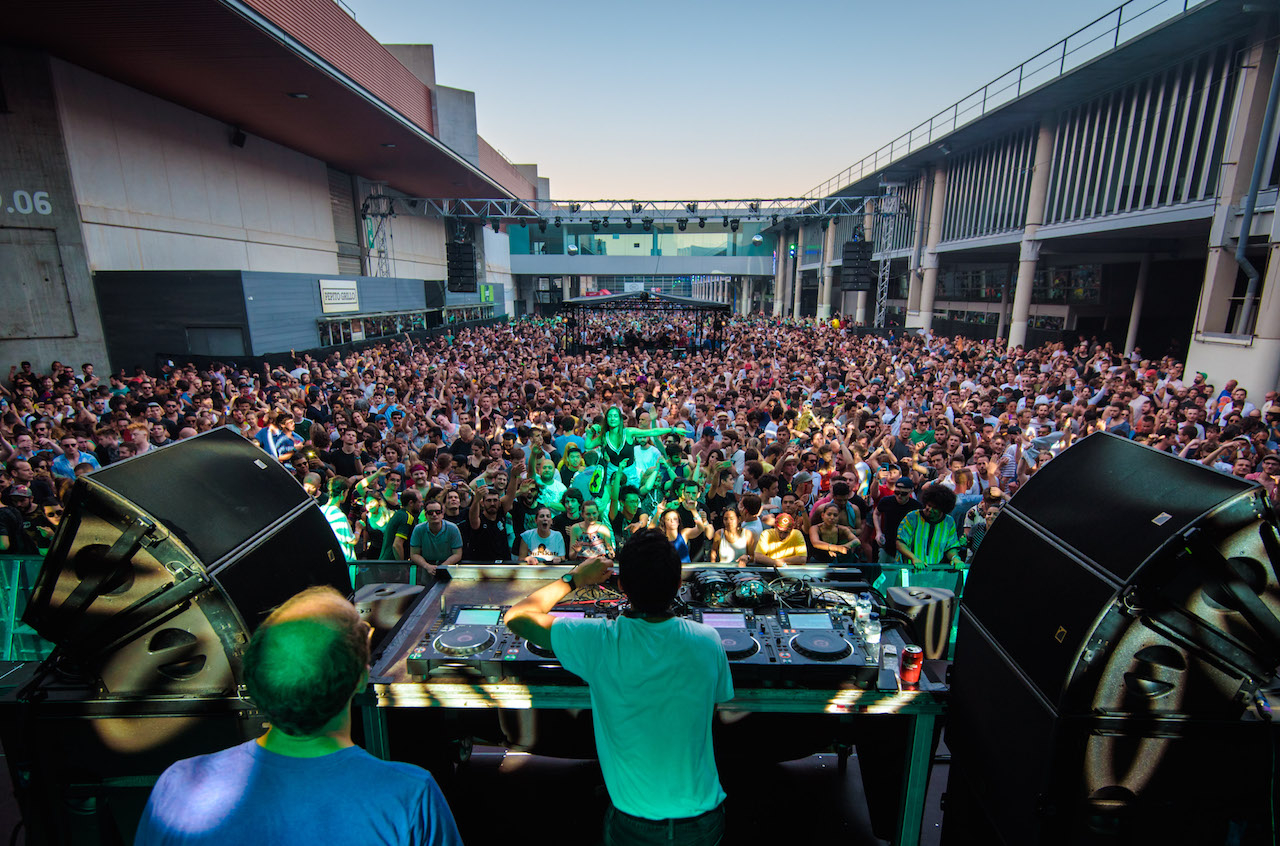 0303
0303